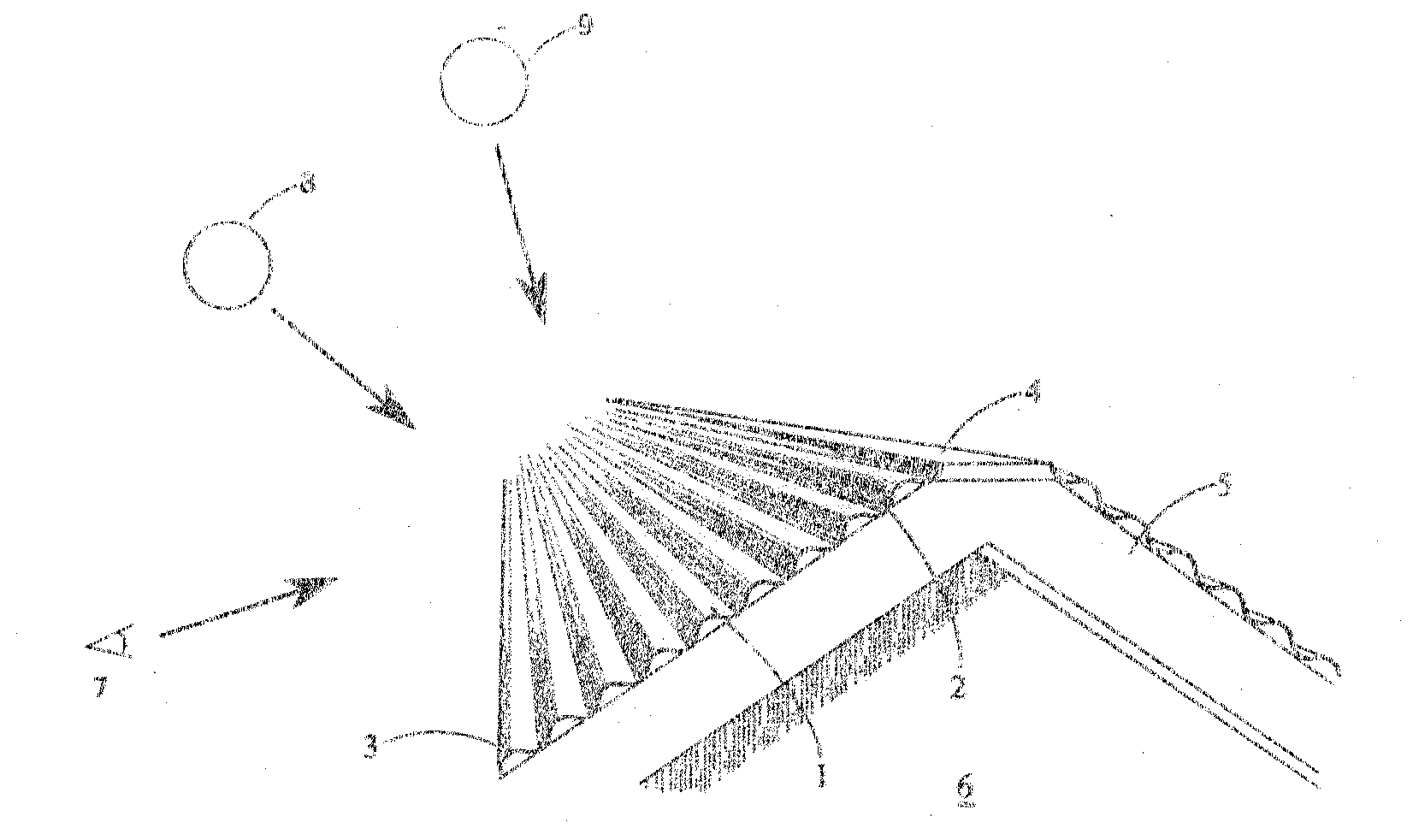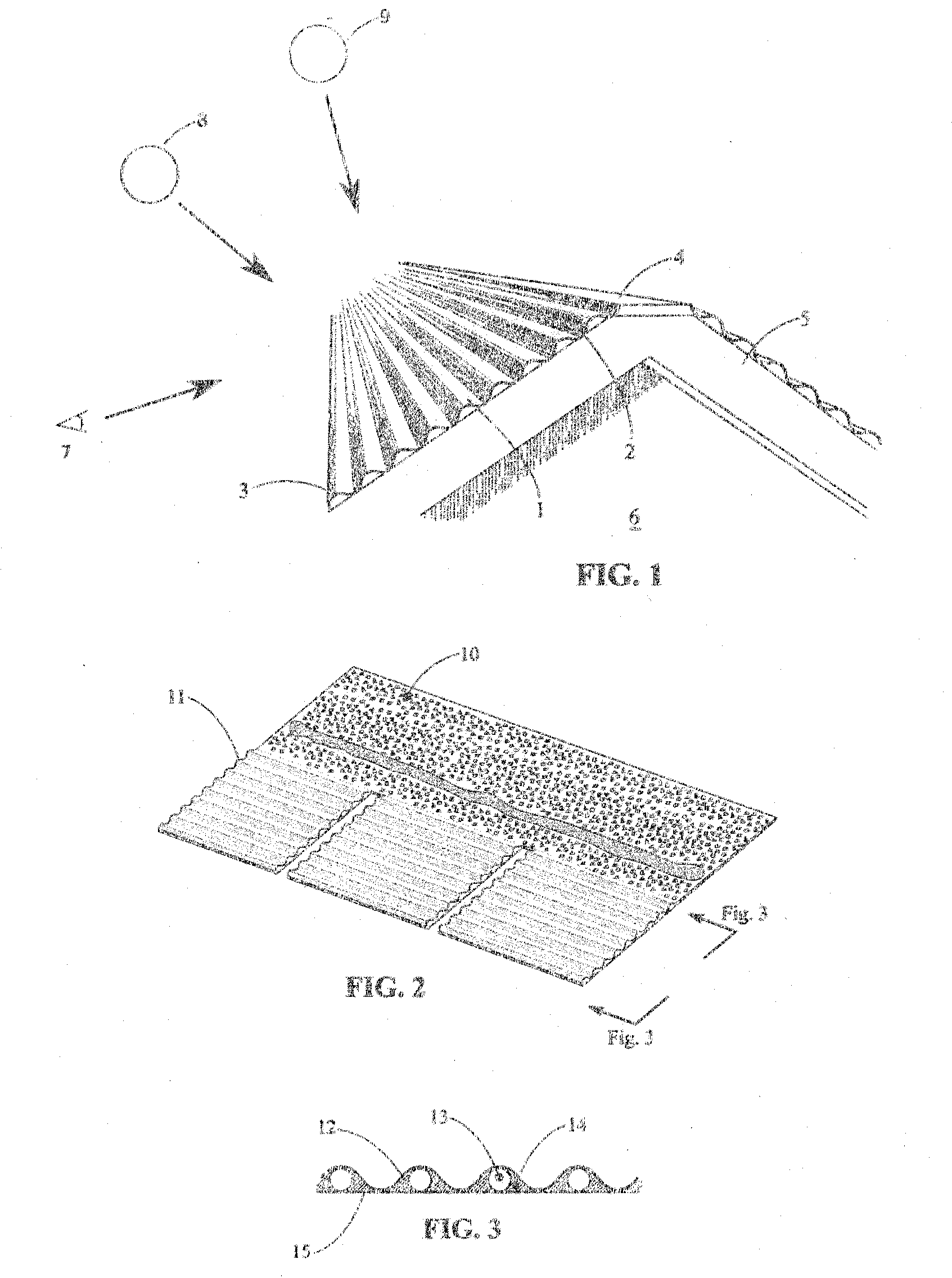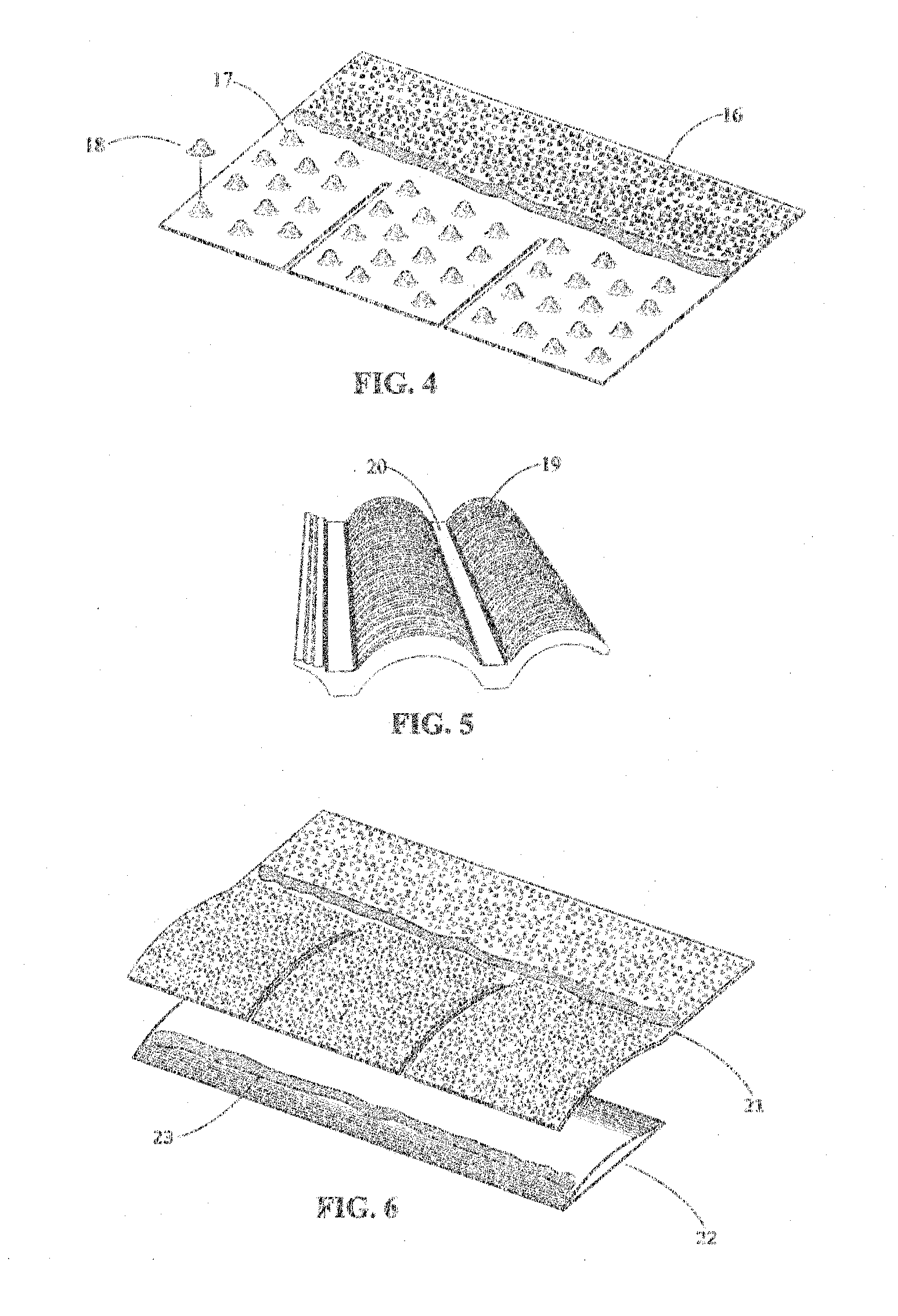Surfaces Suitable for Directionally Reflective Roofs and Methods Thereof
- Summary
- Abstract
- Description
- Claims
- Application Information
AI Technical Summary
Benefits of technology
Problems solved by technology
Method used
Image
Examples
Embodiment Construction
[0032]Embodiments of this invention relate to the exposed outer profile of roofing systems generally for the purposes of energy performance while maintaining ornamental quality and weather resistant functionality. A generally undulating profile of successive corrugations in a roof along the pitch of the roof and extending along the outer surface of the roof generally in the horizontal direction results in portions of the roof of greater visibility by persons at common viewing positions and portions of lesser visibility. Those portions of lesser visibility by persons at common viewing positions are generally more upward facing and comprise a large part of the sun view factor at increasingly higher elevation angles.
[0033]FIG. 1 illustrates a simple embodiment of a roof according to this invention. The generally undulating shape is shown as a series of corrugated profiles along the pitch of the roof from the fascia (3) to the ridge (4). Each undulating profile has a portion of the expo...
PUM
 Login to View More
Login to View More Abstract
Description
Claims
Application Information
 Login to View More
Login to View More - R&D
- Intellectual Property
- Life Sciences
- Materials
- Tech Scout
- Unparalleled Data Quality
- Higher Quality Content
- 60% Fewer Hallucinations
Browse by: Latest US Patents, China's latest patents, Technical Efficacy Thesaurus, Application Domain, Technology Topic, Popular Technical Reports.
© 2025 PatSnap. All rights reserved.Legal|Privacy policy|Modern Slavery Act Transparency Statement|Sitemap|About US| Contact US: help@patsnap.com



